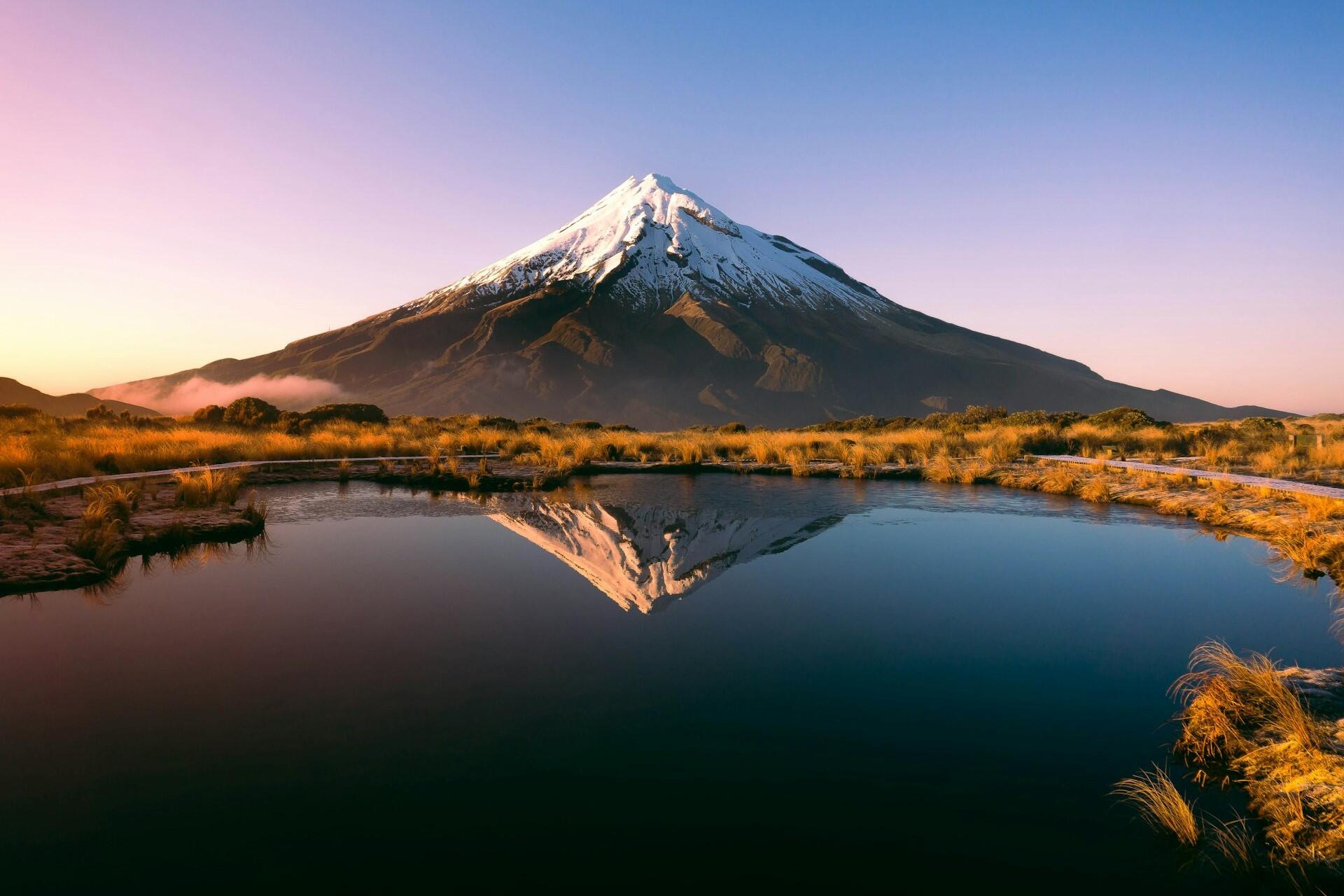He iwi tahi tātou. / Now we are one people.
William Hobson, at the signing of the Treaty of Waitangi, 6 February 1840
The history of New Zealand is one of exploration, migration, conflict, resilience, and innovation, reflecting the challenges faced by a small nation in the South Pacific. From the first Polynesian navigators and Māori culture to the arrival of European explorers and the signing of the Treaty of Waitangi, New Zealand's ongoing history is shaped by people. Here, we'll explore the milestones that built the nation from wars and political change to global achievements in sport, science, and culture. Here, we'll see how a small South Pacific nation became a beacon of fairness, innovation, and identity.
c. 1300s
Polynesian Settlement
Polynesian navigators arrive in Aotearoa, establishing Māori communities with traditions of whakapapa, carving, and oral history that remain central to Māori identity today.
1642
Abel Tasman sights New Zealand
Dutch explorer Abel Tasman is the first European to record New Zealand, though his visit ends in conflict with local Māori.
1769
James Cook arrives
British explorer James Cook maps the coastline, marking the beginning of regular contact between Māori and Europeans.
1840
Treaty of Waitangi signed
Over 500 Māori chiefs signed the Treaty with the British Crown, marking New Zealand's founding, but also sparking long-standing disputes over sovereignty.
1845–1872
New Zealand Wars
Conflicts between Māori and colonial forces led to thousands of deaths and widespread land confiscations.
1893
Women gain the vote
After campaigns led by Kate Sheppard, New Zealand became the first country in the world to grant women the right to vote.
1907
Dominion status
New Zealand becomes a Dominion within the British Empire, symbolising growing autonomy and the rise of prime ministerial leadership.
1914–1918
World War I
Over 100,000 New Zealanders have served overseas, with Gallipoli and the Western Front shaping the nation's memory and identity.
1935
Labour government begins welfare reforms
Michael Joseph Savage’s Labour government introduced state housing and pensions, establishing reforms that shaped New Zealand’s modern welfare system.
1939–1945
World War II
Under Peter Fraser, New Zealand contributes to the Allied war effort and becomes a founding member of the United Nations.
1975
Waitangi Tribunal established
The tribunal is established to address Treaty breaches, marking the beginning of decades of settlements and the Māori cultural revival.
1987
Nuclear-free legislation
David Lange's government bans nuclear ships, showing how New Zealand’s government could take bold independent stances in world affairs.
2010–2011
Christchurch earthquakes
Two major earthquakes devastate the city, killing 185 people and triggering a massive national rebuild.
2017
Jacinda Ardern elected prime minister
At 37, Ardern becomes the world's youngest female head of government, leading New Zealand through crises with global recognition.

Early Polynesian Settlement and Māori Origins
We'll start our history of New Zealand with the arrival of Polynesian navigators over 700 years ago. Using advanced knowledge of the stars, ocean currents, and seasonal winds, they settled Aotearoa, becoming the first Māori people. With them, they brought crops like (sweet potato), traditional carving, and oral traditions that shaped a rich cultural identity.
Early Māori society stratified into iwi (tribes) and hapū (sub-tribes), each with its own leaders, histories, and ties to the land. War, alliances, and trade were integral to life, but there were also strong cultural practices, such as whakapapa (genealogy), whakataukī (proverbs), and pepeha (identity statements). For centuries, Māori have cultivated a deep connection to the land and sea, predating European contact.
First Encounters: Dutch and British Exploration
The first recorded European to sight New Zealand was the Dutch explorer Abel Tasman in 1642. His visit ended in violence when his crew clashed with local Māori, and he never landed. Over a century later, Captain James Cook arrived in 1769. He mapped the coastline with remarkable accuracy, and Cook's voyages marked the beginning of regular interaction between Europeans and Māori, with certain figures shaping the country's history for the foreseeable future.
These early interactions brought opportunity and disruption. European settlers brought new tools, crops, and animals, but also introduced diseases and firearms that reshaped Māori society. Whalers, sealers, and traders established outposts, and missionaries worked to spread Christianity and literacy. By the early 19th century, New Zealand had become a meeting place of cultures. Still, the stage was being set for tensions that would shape the country's political and social history.
The Treaty of Waitangi (1840)
The Treaty of Waitangi, signed on 6 February 1840, was a pivotal moment in New Zealand's history. Drafted by the British Crown, it was signed by over 500 Māori chiefs, a moment that extended British authority while creating lasting disputes. However, there were significant discrepancies between the English and te reo Māori versions that ultimately caused confusion and conflict regarding sovereignty and land rights.
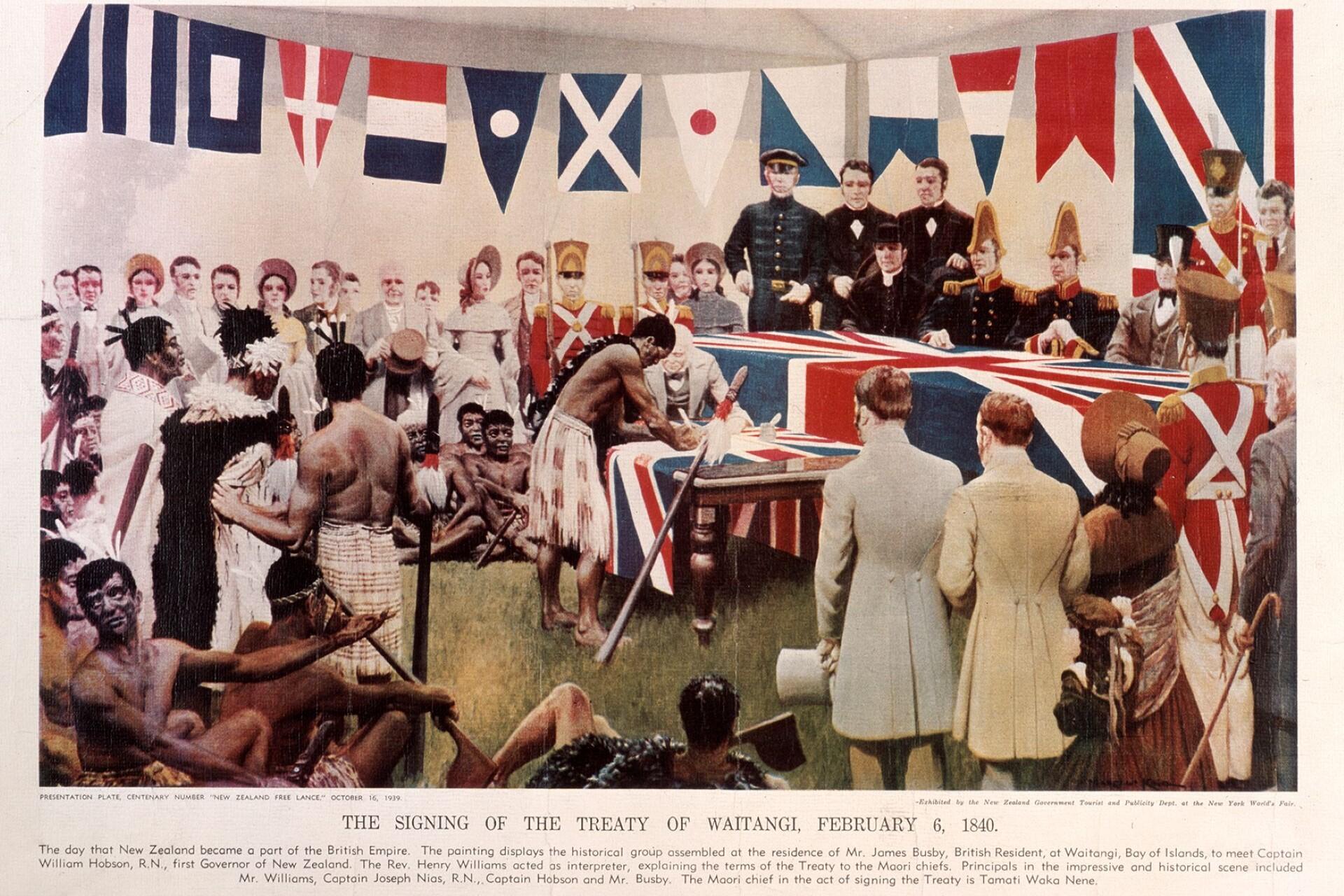
For many Māori, the Treaty symbolised both partnership and betrayal. It recognised their status as people of the land (tangata whenua), land confiscations and breaches sparked grievances that would last for generations. The Treaty is recognised as New Zealand's founding document, and ongoing settlements through the Waitangi Tribunal continue to shape debates about justice, governance, and national identity.
Signed in 1840, the Treaty of Waitangi was intended to formalise relations between Māori and the British Crown. While it promised protection of lands and taonga, there were differences between the Māori and English versions that created lasting disputes. The Treaty became a symbol of both partnership and broken promises, sparking decades of conflict and political debate. Today, it is recognised as New Zealand's founding document, and through the Waitangi Tribunal, it continues to guide reconciliation and justice.
The New Zealand Wars (1845–1872)
The decades after the signing of the Treaty of Waitangi were marked by conflict. Known collectively as the New Zealand Wars, these battles primarily occurred in the North Island, while the South Island was less directly affected. Māori leaders such as Hōne Heke and Te Kooti resisted the growing presence of British troops and settlers, often employing innovative tactics and fortified pā (villages) to maintain their hold on the land.
These wars were devastating, and thousands of people were killed. Vast areas of Māori land were confiscated by the colonial government, sparking debates over land rights that continue today. Wars and conflicts also further entrenched divisions between Māori and Pākehā (Europeans), which would shape the country's political landscape for generations to come.

Colonial Growth and the Road to Dominion Status
By the 19th century, European settlement had expanded across both the North and South Islands. New towns, railways, and farms were reshaping the landscape, and every colonial settlement added to the rapid transformation of New Zealand. When gold was discovered in Otago and the West Coast, it brought waves of migrants, with industries such as wool and dairy laying the foundations for economic growth. This is the time period when Auckland, Wellington, and Christchurch developed into major centres of government and trade.
With New Zealand moving toward greater autonomy, the Liberal Government of the 1890s passed key labour reforms, improving workplace conditions and social welfare. In 1907, New Zealand became a Dominion of the British Empire, which symbolised greater independence while retaining ties to the British Crown.
prime ministers in New Zealand.
Women and the Right to Vote (1893)
In 1893, New Zealand became the first country in the world to grant women the right to vote, which reshaped both national and global history. This achievement was the result of tireless campaigning by great New Zealand women, such as Kate Sheppard, who organised petitions, public meetings, and lobbying of Parliament. The final petition was signed by more than 30,000 women. It was one of the largest to ever be presented to the New Zealand parliament at the time.
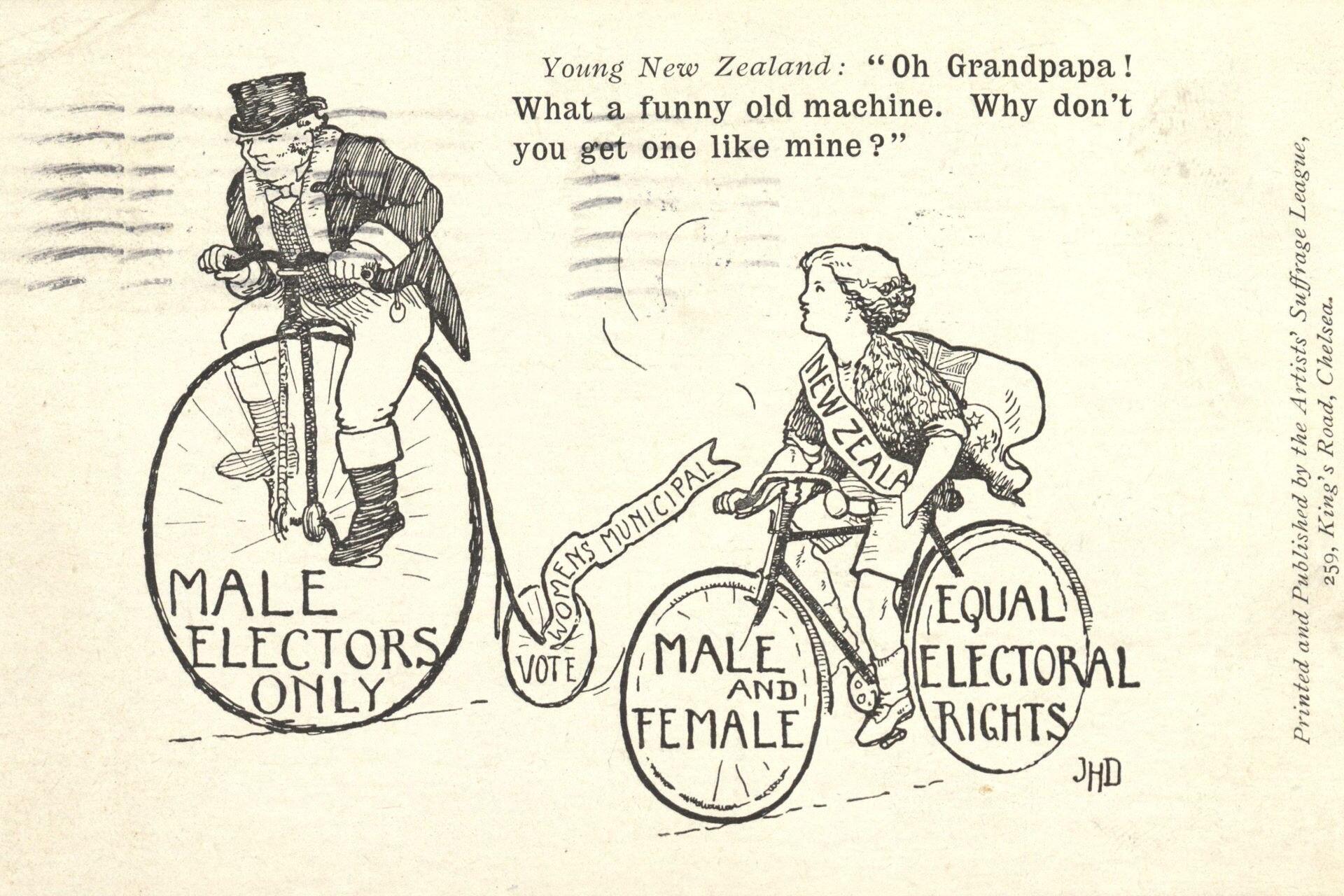
The success of the suffrage movement was outstanding. On 28 November 1893, women voted for the first time in a general election, with a high turnout across the country. This moment helped establish New Zealand as a world leader in social reform. It also laid the groundwork for later advances in gender equality.
In 1893, New Zealand became the first country in the world where women could vote in a national election. This massive achievement, led by suffragist Kate Sheppard, demonstrated the transformative power of determined activism in reshaping politics. More than 30,000 signatures on the suffrage petition pressured parliament to pass the reform, cementing New Zealand’s reputation as a pioneer of democracy and gender equality.
New Zealand in the World Wars
Both the First and Second World Wars had a profound effect on New Zealand, each war reshaping its military and national identity. In World War I, over 100,000 New Zealanders served overseas. Battles at Gallipoli and the Western Front left a lasting mark on the nation. The ANZAC tradition, shared with Australia, became a central part of the country's national identity. Anzac Day is celebrated each year on 25 April.
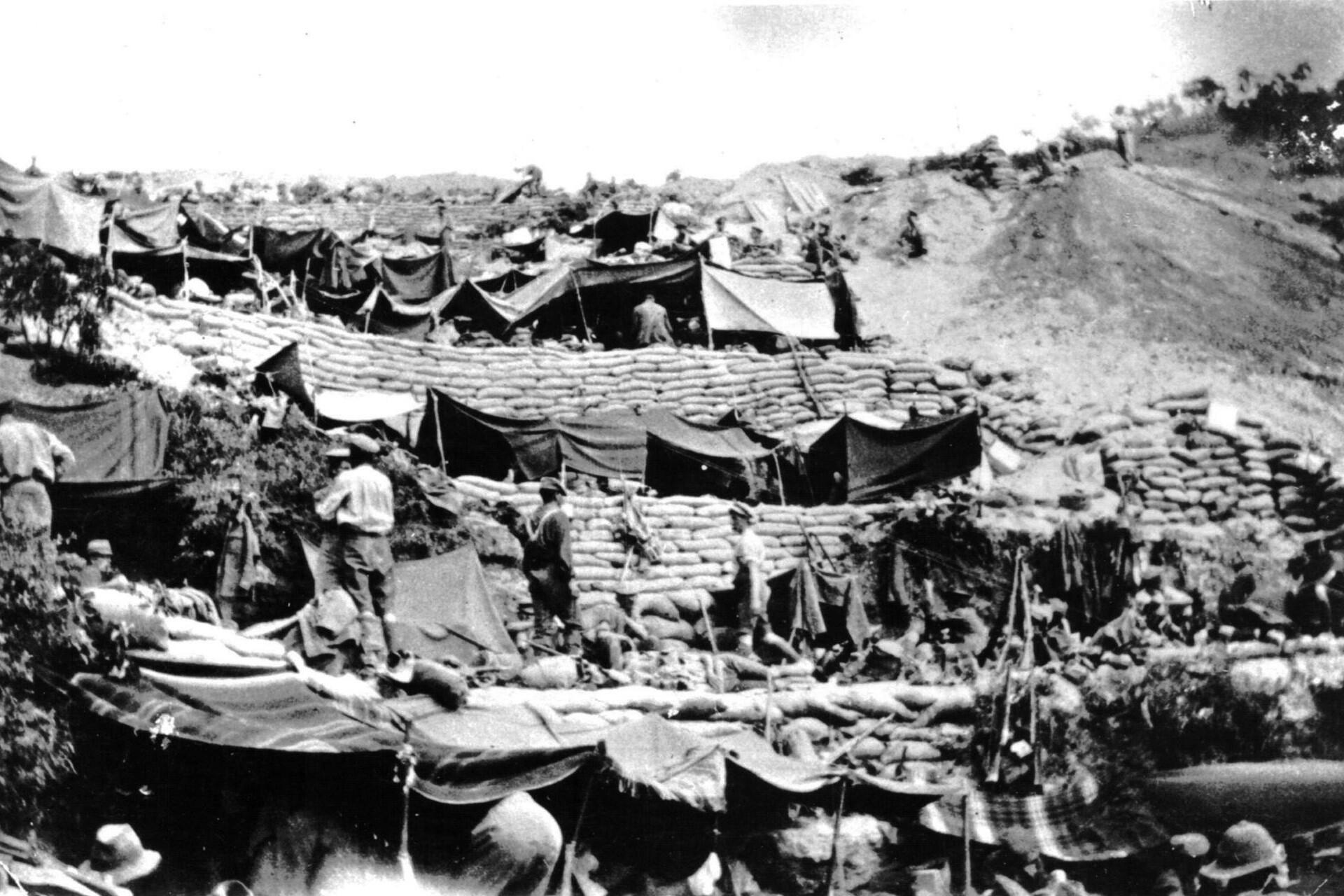
New Zealand also participated in World War II, with troops serving in Europe, North Africa, and the Pacific. Then Prime Minister Peter Fraser also played a diplomatic role on behalf of New Zealand, a founding member of the United Nations since 1945. The wars accelerated social and economic change, with women entering the workforce in greater numbers. New Zealand's sense of identity, resilience, and commitment to democracy was strengthened across these times.
New Zealanders served overseas.
Post-War Change and National Identity
After the war, New Zealand underwent a significant transformation. Economic growth in the 1950s and 1960s was primarily driven by agriculture and trade with the United Kingdom. With Britain joining the European Economic Community in 1973, New Zealand had to diversify its economy by forging new links with Australia, Asia, and the wider Pacific.
Urbanisation changed how people lived while migration from the Pacific Islands reshaped New Zealand's demographic landscape. In the 1970s and 1980s, Māori activism gained increased momentum as younger generations demanded recognition of treaty rights. New Zealand was pushed towards biculturalism, with the Māori language and culture being more visible in public life.
The Waitangi Treaty remains problematic.
In 1975, the Waitangi Tribunal was established by an Act of Parliament, giving Māori a formal channel for historic grievances. This would lead to settlements that returned land, provided financial compensation, and acknowledged Crown wrongdoing. These legal measures, combined with the revival of te reo Māori through schools, broadcasting, and community initiatives, helped strengthen the Māori identity within New Zealand.
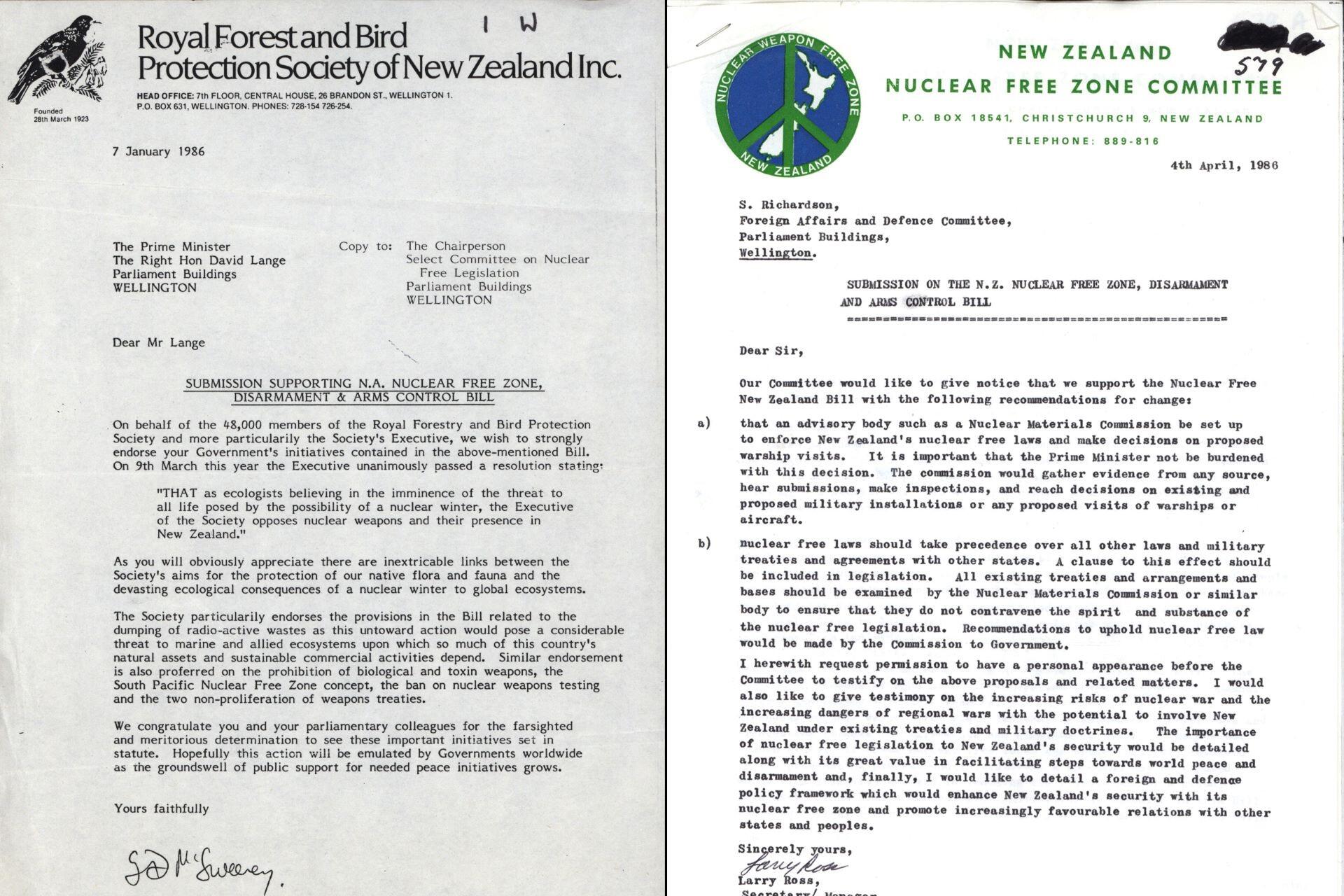
In the 1980s, New Zealand made the decision to introduce a nuclear-free policy, which banned nuclear-powered and nuclear-armed ships from entering New Zealand waters. This was a popular move at home, but it strained relations with the United States. However, it gave New Zealand a distinctive global identity as a small but principled nation.
New Zealand’s location on the Pacific “Ring of Fire” means earthquakes have repeatedly shaped its history. The 1931 Hawke’s Bay earthquake claimed 256 lives and forced reforms in construction that permanently changed how towns and cities were rebuilt. More recently, the 2010–2011 Christchurch earthquakes devastated the South Island city, killing 185 and forcing widespread rebuilding. These disasters highlighted the country's resilience and led to significant advances in urban planning and emergency management.
Modern New Zealand: Global Leaders and Cultural Icons
In recent decades, New Zealand has been recognised for its progressive politics, cultural creativity, and global influence disproportionate to its size. Debates on climate change, gender equality, and crisis leadership have shown that the role of the NZ Prime Minister is one of a national leader and global figure.
Outside of politics, New Zealanders have excelled in the arts, sport, and science. Peter Jackson put the country on the map through Oscar-winning fantasy films, drawing in tourists from all over the world. Sports fans recognise New Zealand as a powerhouse in rugby and cricket, as well as producing numerous talented Olympic athletes.

